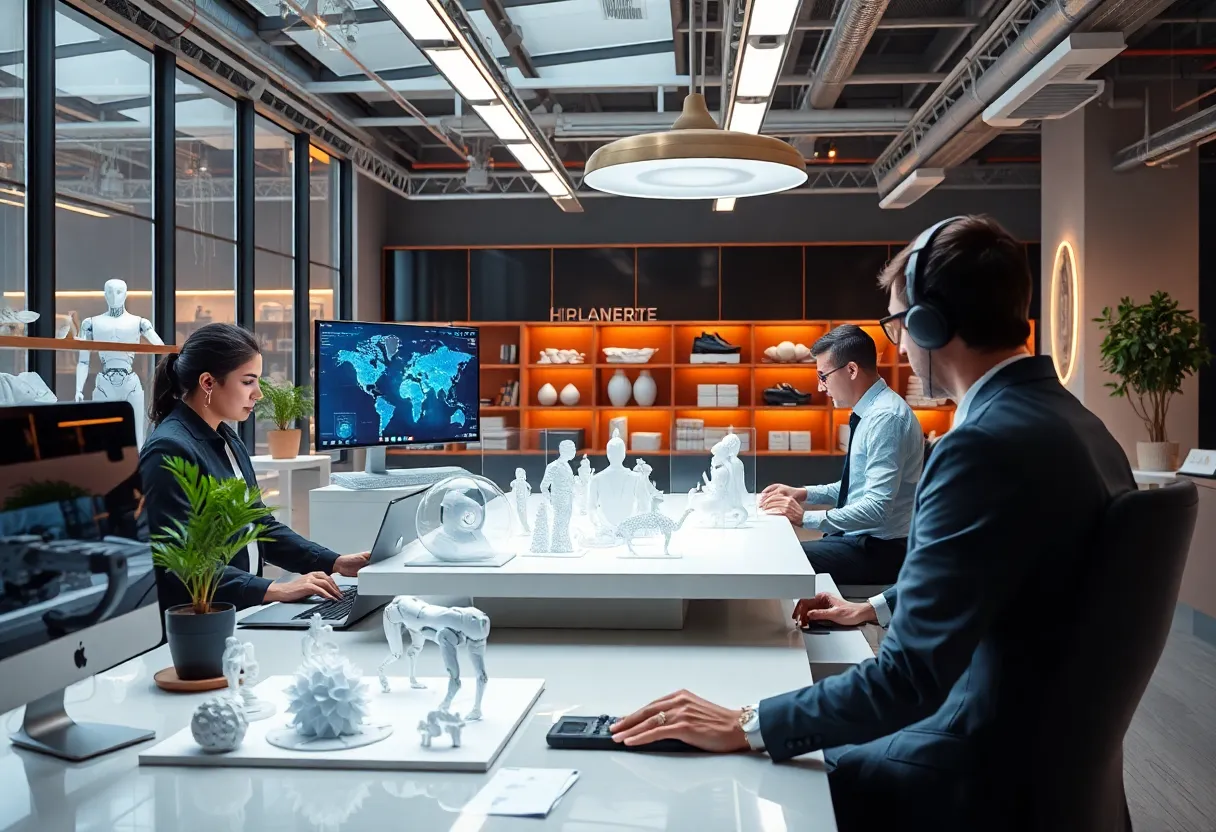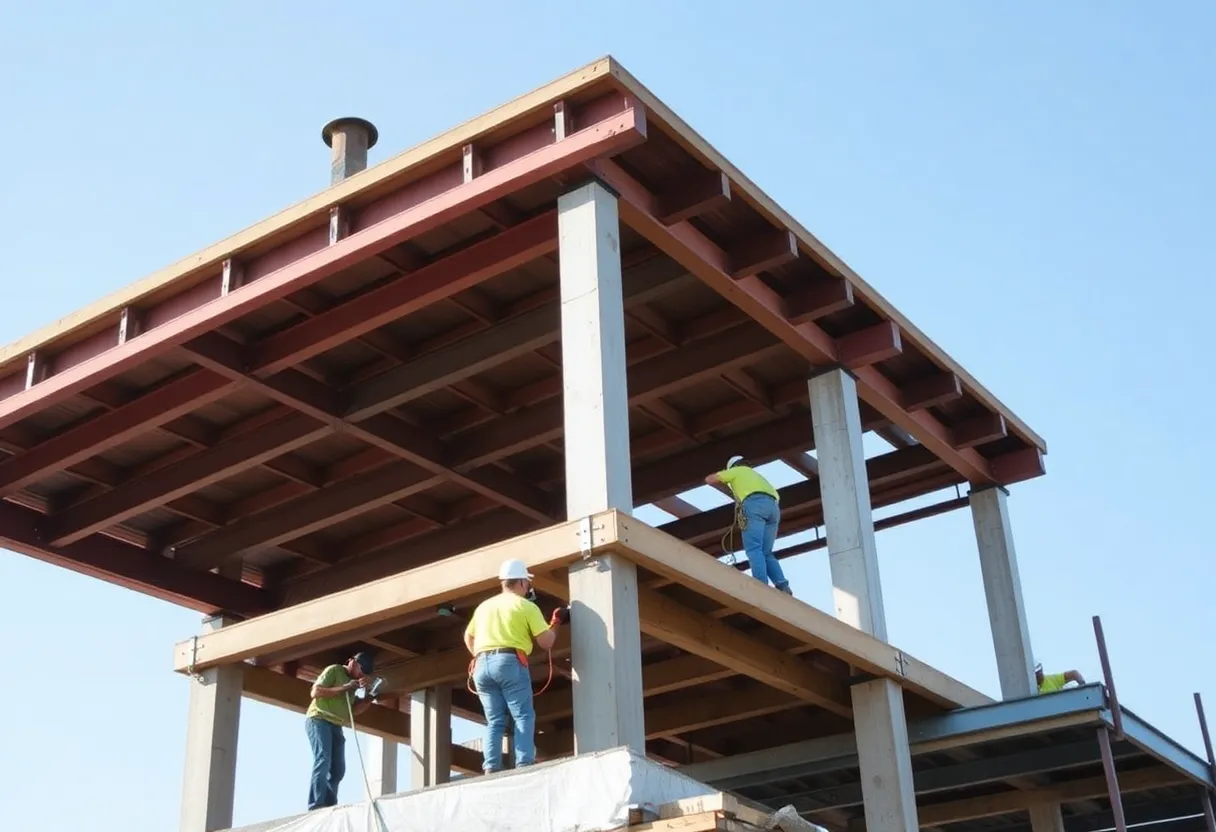News Summary
Autodesk is making significant strides in the design software market, especially within the artificial intelligence sector, which is projected to reach $22 billion by 2030. The company’s growth is supported by strategic partnerships with industry leaders, a commitment to talent development, and innovative applications of AI in design processes. By integrating AI into Building Information Modeling, Autodesk aims to optimize designs sustainably while addressing evolving regulatory demands. Despite challenges, Autodesk’s financial performance and future projections indicate strong market positioning and a promising outlook.
Autodesk Positioned for Growth in $22 Billion AI Design Software Market
Autodesk is poised to strengthen its dominant position in the design software market, particularly in the rapidly evolving artificial intelligence (AI) sector, projected to reach $22 billion by 2030. This growth is primarily fueled by a remarkable compound annual growth rate (CAGR) of 12.3%. Autodesk’s strategic partnerships and talent development efforts play a crucial role in its approach to capitalizing on these market trends.
Strategic Partnerships Driving Growth
Through a well-established ecosystem of strategic partnerships, Autodesk enhances its growth strategy. Collaborations with industry leaders such as Arup and Esri focus on embedding AI into existing workflows. These partnerships contribute significantly to Autodesk’s aim of creating sustainable design solutions. By integrating AI into Building Information Modeling (BIM), Autodesk provides tools that optimize designs while considering environmental impacts.
AI in Visual Effects and Animation
One of the standout offerings from Autodesk is its Arnold renderer, an AI-driven toolkit that has become essential in the film industry. Since 2015, it has been used in 90% of Oscar-winning films for visual effects, demonstrating its significance in the world of animation and visual storytelling.
Nurturing Talent for Future Innovations
To ensure ongoing growth, Autodesk actively nurtures a talent pipeline through initiatives such as the SIGGRAPH conference, dedicated to computer graphics and interactive techniques. This annual event allows emerging professionals, like Juan de Joya, to transition from educational roles to influential positions across the tech landscape, showcasing the importance of talent development in Autodesk’s growth narrative.
Commitment to Sustainability
Autodesk is also committed to enhancing global sustainability efforts in the construction industry. This includes key initiatives designed to use technology for environmental benefits, such as:
- BIM-Integrated AI: Automating carbon assessments during the design process, potentially reducing emissions by up to 20%.
- Collaborations with the World Business Council for Sustainable Development to standardize carbon accounting guidelines.
- Geospatial AI: Modeling the environmental impacts of infrastructure to inform better design decisions.
Innovative Applications of Geospatial Data
The partnership with Esri allows Autodesk to combine geospatial data with BIM tools. This integration leads to location-aware designs that simulate how infrastructure interacts with real-world environments such as topography and hydrology. Additionally, AI-driven resilience modeling enables projects to better address challenges like flood defense, ultimately resulting in cost reductions of 15-20%.
Meeting Regulatory Demands
Recognizing the increasing emphasis on sustainability within the industry, Autodesk’s tools are set to become essential in meeting government mandates for net-zero construction and infrastructure. This positioning not only ensures compliance but also supports the broader goal of reducing environmental impact across projects.
Financial Performance and Future Projections
In its most recent quarterly report for Q4 FY2025, Autodesk reported robust revenue growth, achieving a 12% year-over-year increase to $1.64 billion. This growth was supported by performance in segments such as architecture, engineering, construction, and manufacturing. The company also enjoyed an improved non-GAAP operating margin of 37%, alongside geographic revenue growth of 11% in the Asia Pacific region and 14% in Europe, the Middle East, and Africa (EMEA).
For FY2026, Autodesk anticipates revenues between $6.89 billion and $6.97 billion, with free cash flow expected to surpass $2.1 billion. This financial foresight highlights Autodesk’s unique position in the market through its focus on talent development, strategic partnerships, margin discipline, and international expansion.
Challenges and Risks
Despite its promising outlook, Autodesk faces potential risk factors, including geopolitical tensions and the fast-paced evolution of AI technology, requiring continuous investment in research and development (R&D). However, the company’s proactive strategies suggest a firm commitment to navigating these challenges.
Conclusion
Autodesk is not merely a software company but a significant force transforming the design industry through AI. Ongoing investments in talent and innovative technologies are set to drive the company forward in an increasingly competitive landscape. Investment actions predict a potential growth of 12-15% within the next year, reinforcing Autodesk’s pivotal role in shaping the future of design.
Deeper Dive: News & Info About This Topic
Additional Resources
- Ainvest: Autodesk AI-Driven Design Dominance
- Wikipedia: Artificial intelligence
- PR Newswire: Autodesk’s 3rd Annual State of Design
- Google Search: AI in Design
- AEC Magazine: Autodesk Charts Its AI Future
- Google Scholar: Autodesk AI design
- Autodesk Blog: AI and Sustainability
- Encyclopedia Britannica: Design Software
- Autodesk Blog: AI-Powered Design Updates
- Google News: Autodesk
Author: Construction FL News
The FLORIDA STAFF WRITER represents the experienced team at constructionflnews.com, your go-to source for actionable local news and information in Florida and beyond. Specializing in "news you can use," we cover essential topics like product reviews for personal and business needs, local business directories, politics, real estate trends, neighborhood insights, and state news affecting the area—with deep expertise drawn from years of dedicated reporting and strong community input, including local press releases and business updates. We deliver top reporting on high-value events such as the Florida Build Expo, major infrastructure projects, and advancements in construction technology showcases. Our coverage extends to key organizations like the Associated Builders and Contractors of Florida and the Florida Home Builders Association, plus leading businesses in construction and legal services that power the local economy such as CMiC Global and Shutts & Bowen LLP. As part of the broader network, including constructioncanews.com, constructionnynews.com, and constructiontxnews.com, we provide comprehensive, credible insights into the dynamic construction landscape across multiple states.





